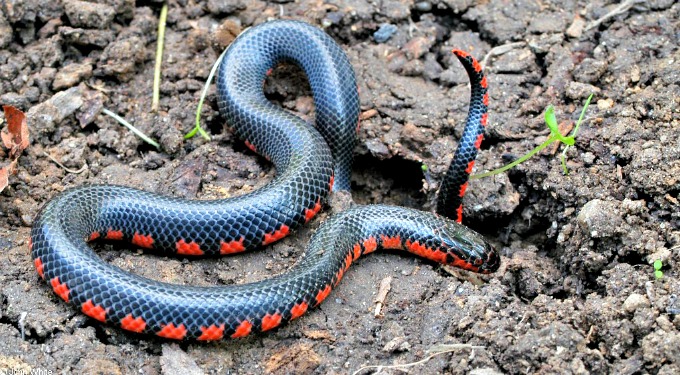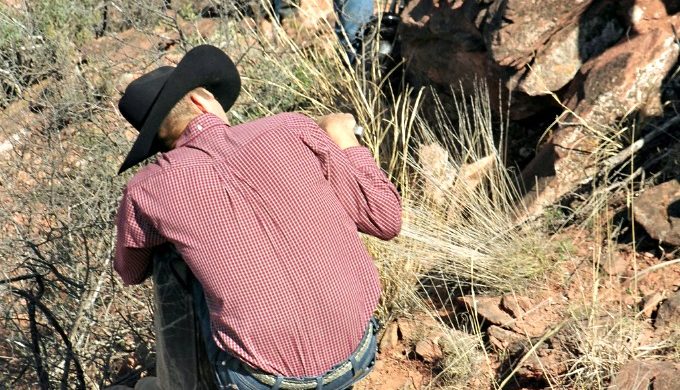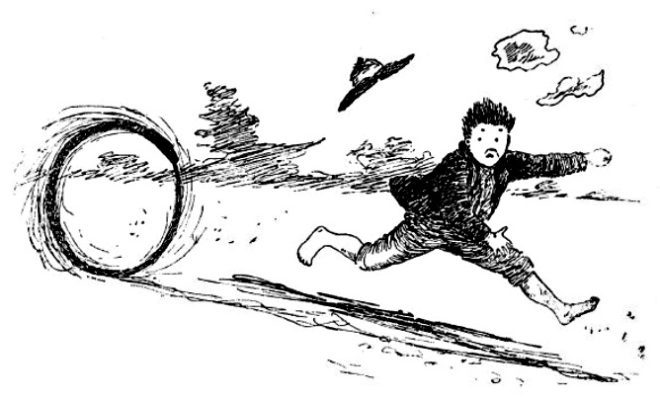If you grew up hearing tall tales about the fictional cowboy, Pecos Bill, who was raised by coyotes and ate dynamite for breakfast, you might be familiar with one of Pecos Bill’s nemeses, the ferocious Texas hoop snake. Legend has it this three-foot-long snake is able to stick its own tail in its mouth, shape itself into a hoop, and roll toward its prey (traveling up to 60 mph). The mythical hoop snake allegedly has a notched, venomous tail (with horn-like appendages) that it uses to kill its prey, or anything else that gets in its way. In fact, folks claim a single jab by the hoop snake’s tail can cause a full-grown tree to instantly wither, turn black, and die all within a day. There have been claims of hoop snake sightings in Minnesota, Wisconsin, North Carolina and British Columbia, but some of the most fascinating sightings originated right here in Texas.
Nature
The Legend of the Texas Hoop Snake: Fact or Folklore?
The Hoop Snake Has Been Sighted in West Texas

Photo: Facebook/Alpo Barkfest
There is no official documentation of the existence of the hoop snake–only word of mouth, dating back to colonial times in North America. In Texas, the legendary beast has mostly been spotted in far west Texas, where some claim to have seen the creature rolling after prey, among the tumbleweeds in the desert near Del Rio. Those who claim to have encountered the elusive hoop snake (and have lived to tell about it) recommend that if you stumble upon one, your best bet is to hide behind a tree or–if you’re feeling particularly brave–dive through the “hoop” the snake has shaped itself into and run the other way.
Mud Snake or Hoop Snake? You Decide…

Photo: Facebook/Brandi Radick
Some contend this mythical reptile is just a common mud snake, which has been known to form itself into a loose hoop shape. The mud snake is found throughout most of the southeastern regions of the United States and uses its sharply pointed tail to prod its prey (probably stoking the rumor of the hoop snake’s highly venomous tail). Given the commonalities between the hoop snake and the mud snake, you might be thinking, “case closed,” but here’s the head-scratcher: the mud snake is almost entirely aquatic and nocturnal, which flies in the face of those dusty, west Texas desert hoop snake sightings.
$10,000 Up For Grabs for Hoop Snake Specimen

Photo: Flickr/Andy
There are still occasional sightings of the hoop snake reported throughout the world and a growing movement of people who contend the hoop snake is alive and well in Texas as well as in other parts of the world. If you felt compelled to conduct your own hoop snake hunt, American herpetologist, Raymond Ditmar set aside $10,000 in a trust back in the 1930s for the first person to come forward with a true hoop snake specimen. The prize has yet to be claimed. Happy hunting and best of luck!


